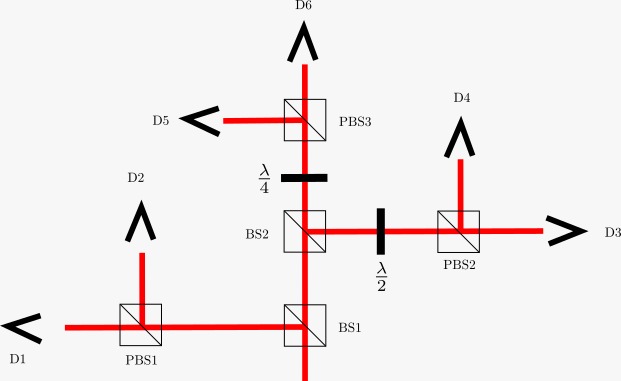Basic Usage
Possibly the simplest setup for quantum state tomography is the tomography of the polarization state of a single photon, as illustrated bellow.

The following code snippet demonstrates how this can be modeled in the package:
using BayesianTomography
#Define the POVM for the polarization tomography
symbols = [:H, :V, :D, :A, :R, :L]
measurements = [get_projector(polarization_state(Val(s))) for s in symbols]
problem = StateTomographyProblem(measurements)
#Linear inversion method
mthd = LinearInversion(problem)
#Generate a random quantum state to be used as an example.
ρ = sample(ProductMeasure(2))
#Simulate outcomes
#Note that we need a large number of outcomes for this method to work well.
outcomes = simulate_outcomes(ρ, measurements, 10^6)
σ = prediction(outcomes, mthd)[1] #Make a prediction
fidelity(ρ, σ) #Calculate the fidelity0.99999917f0